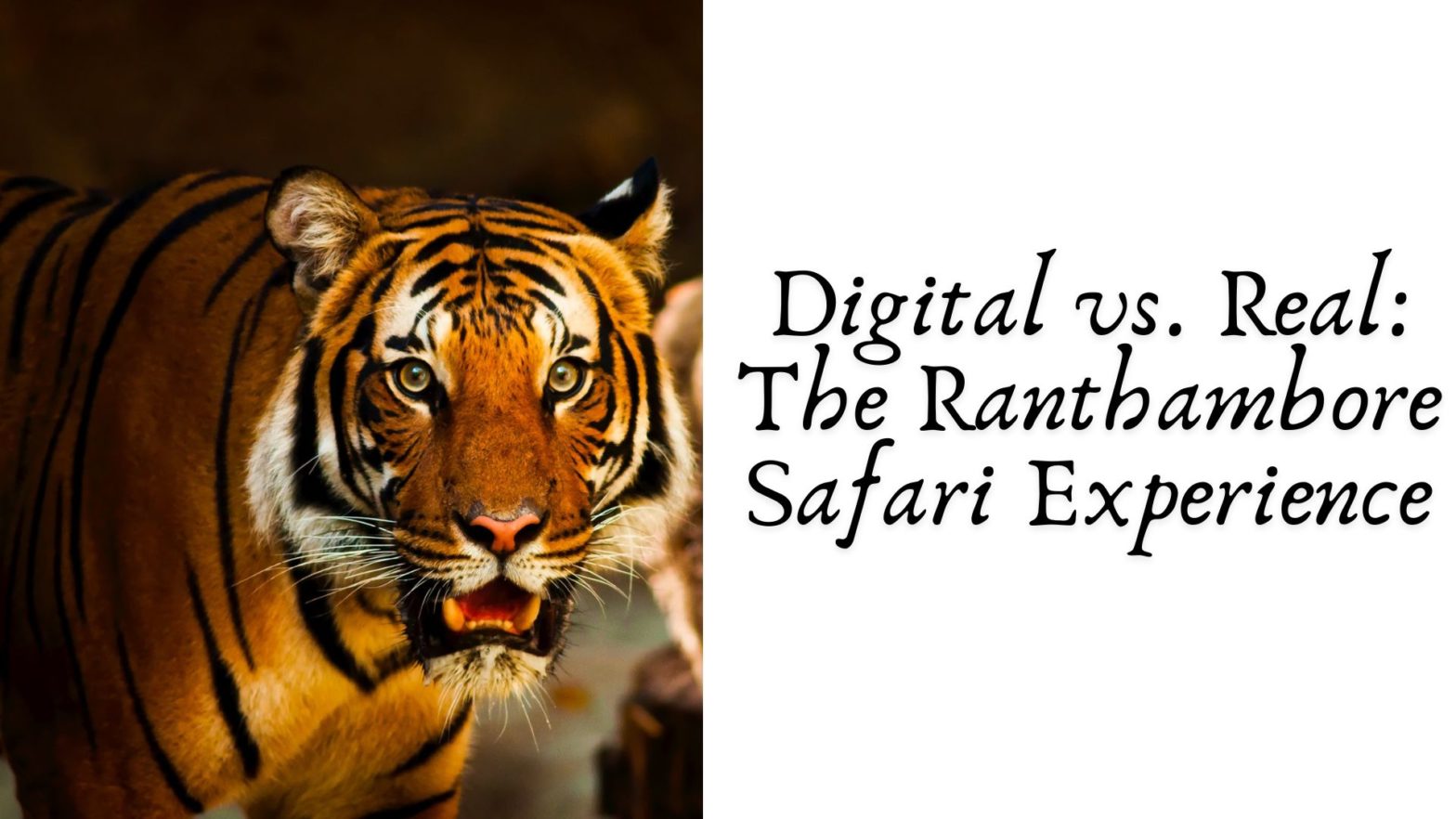Introduction
Ranthambore National Park, nestled in the heart of Rajasthan, India, is one of the most renowned wildlife sanctuaries in the world. Famous for its thriving tiger population, the park attracts thousands of visitors each year who come to experience the thrill of seeing these majestic creatures in their natural habitat. With the rise of digital technology, people can now explore the wonders of Ranthambore safari from the comfort of their homes. This article delves into the differences between a digital safari experience and a real-life visit to Ranthambore, weighing the pros and cons of each.
The Digital Safari Experience
Accessibility and Convenience
One of the primary advantages of a digital safari is accessibility. People from all corners of the globe can experience Ranthambore without the need to travel. Virtual tours and live streams allow enthusiasts to observe wildlife, learn about the park’s history, and understand conservation efforts. These digital experiences are particularly beneficial for those with physical limitations or financial constraints.
Educational Value
Digital safaris offer a wealth of information at the click of a button. Interactive features, detailed documentaries, and expert commentaries provide an in-depth understanding of the ecosystem, wildlife behavior, and conservation challenges. Platforms like National Geographic and various wildlife organizations offer virtual tours that are rich in educational content, making them ideal for students and researchers.
Environmental Impact
Virtual safaris have a significantly lower environmental footprint. Traditional safaris involve travel, which contributes to carbon emissions, and the physical presence of humans in the park can sometimes disrupt the natural behavior of animals. By opting for a digital safari, individuals can enjoy the beauty of Ranthambore without contributing to its ecological burden.
Limitations of Digital Safaris
Despite the numerous benefits, digital safaris cannot fully replicate the experience of being in the wild. The sensory richness of a real safari—the sounds, smells, and the thrill of spotting a tiger in the wild—is lost. The sense of adventure and unpredictability that comes with exploring the jungle in person is a vital aspect that digital experiences cannot capture.
The Real Safari Experience
Immersive Adventure
A real safari in Ranthambore is an adventure like no other. The anticipation begins as the open jeep or canter moves through the dense forest, with a knowledgeable guide pointing out various flora and fauna. The experience is immersive, engaging all the senses and providing an adrenaline rush that is hard to match. Spotting a tiger in the wild, with its intense gaze and powerful presence, is an unforgettable moment that stays with visitors for a lifetime.
Connection with Nature
Being physically present in Ranthambore allows visitors to connect with nature on a deeper level. The sights, sounds, and even the earthy scent of the forest create a profound appreciation for the wilderness. This connection often fosters a stronger commitment to wildlife conservation, as visitors witness firsthand the beauty and fragility of the ecosystem.
Economic Benefits
Tourism is a significant source of revenue for the local economy around Ranthambore. Real-life safaris generate employment for guides, drivers, and hotel staff, and support local businesses. By visiting the park, tourists contribute to the livelihood of the community, which in turn, helps in the conservation efforts of the park.
Challenges of Real Safaris
Real safaris are not without their challenges. They require time, planning, and financial resources. There is also no guarantee of seeing a tiger, as wildlife sightings are unpredictable. Additionally, the influx of tourists can sometimes lead to overcrowding, which may stress the animals and degrade the visitor experience.
Conclusion
The debate between digital and real safari experiences in Ranthambore highlights the unique advantages and limitations of each. Digital safaris offer unparalleled accessibility, educational value, and minimal environmental impact, making them an excellent alternative for those who cannot visit in person. However, the immersive adventure, emotional connection, and economic benefits of real safaris are irreplaceable.
Ultimately, both experiences play a crucial role in promoting awareness and appreciation of wildlife. Digital safaris can serve as an introduction or supplement to real visits, inspiring more people to support conservation efforts. Whether experienced digitally or in person, the Ranthambore safari remains a testament to the beauty and majesty of nature, reminding us of the importance of preserving these wild spaces for future generations.
Name: Eye of The Tiger
Address: Kolkata, West Bengal, India
P.No.: 7003976182

